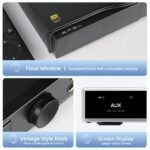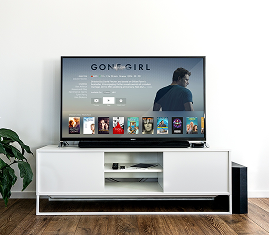So you’re a music lover who’s always looking for ways to enhance your listening experience? Well, look no further than the world of DIY audio projects and building your own customized speakers. In this article, we’ll take you through the exciting journey of creating speakers that cater specifically to your preferences and style. From selecting the perfect components to assembling them with precision, you’ll learn all the basics and gain the confidence to embark on this rewarding DIY adventure. Get ready to turn up the volume and immerse yourself in the world of DIY audio projects.
Why Build Customized Speakers?
When it comes to audio equipment, there’s something special about building your own speakers. Not only does it give you a sense of personal satisfaction, but it also allows you to customize the speakers according to your individual audio preferences. In addition to the personal and creative aspects, building your own speakers can also potentially save you some money compared to purchasing high-end commercial speakers. So, let’s dive into the world of DIY audio projects and explore the benefits and steps involved in building your own customized speakers.
Understanding Audio Basics
Before you jump into building your own speakers, it’s important to have a basic understanding of how sound works and the components that make up a speaker system. Sound travels in waves and these waves have different frequencies which determine the pitch or tone we perceive. When it comes to speakers, the main components include the drivers, which produce the sound, and the enclosure, which helps enhance and direct that sound. Understanding these basic principles will help you make informed decisions throughout your DIY speaker project.
Planning Your DIY Speaker Project
To ensure a successful DIY speaker project, it’s essential to plan ahead. Start by determining the purpose of your speakers. Are you building them for your home theater system, or maybe for your music studio? This will help you narrow down the specifications and design choices for your speakers. Next, set a budget for your project. This will guide your choices in terms of materials, components, and tools. Finally, make a list of the tools and materials you’ll need for your project, such as wood, screws, speaker drivers, crossovers, and amplifiers.
Choosing Your Speaker Design
the design of your speakers is an important aspect that will affect both their appearance and performance. There are various standard speaker designs to choose from, such as bookshelf, tower, or satellite speakers. Consider the size and shape of the speakers as well, keeping in mind the available space and your personal preferences. Don’t be afraid to get creative and think outside the box when it comes to design. Innovative and unique speaker designs can not only enhance the aesthetics but also impact the sound quality in fascinating ways.
Selecting Speaker Components
When it comes to DIY speakers, one of the most exciting parts is selecting the components. The main component is the speaker driver, which generates the sound. There are different types of speaker drivers, such as woofers, tweeters, and mid-range drivers, each responsible for producing a specific range of frequencies. Along with the drivers, you’ll need to choose the right speaker enclosure, as it plays a crucial role in shaping the sound produced by the drivers. Additionally, understanding amplifiers and crossovers will help ensure the proper functioning and integration of your speaker components.
Building the Speaker Enclosure
Now that you have a plan and the necessary components, it’s time to start building the speaker enclosure. The enclosure serves as a housing for the speaker components and plays a critical role in determining the overall sound quality. Common materials used for enclosures include wood, medium-density fiberboard (MDF), or even PVC pipe for certain designs. Follow a step-by-step guide to construct the enclosure, ensuring accurate measurements and precise assembly. Once the enclosure is built, you can finish and decorate it to your liking, adding a personal touch to your custom speakers.
Assembling Your Speaker Components
With the enclosure complete, it’s time to assemble the internal components of your speakers. Prepare your speaker drivers, crossovers, and other internal parts by following the manufacturer’s instructions. Take care when handling the components to avoid damaging them. Once prepared, securely mount the components into the enclosure, ensuring they are properly positioned for optimal sound projection. After this step, you’ll need to complete the internal wiring, connecting the drivers, crossover, and amplifier as per the wiring diagram or instructions provided with the components.
Testing Your DIY Speakers
After assembling the speakers and connecting all the components, it’s important to test them to ensure they are performing as desired. There are various methods for testing speaker performance, such as using audio test tones or playing a variety of music genres to assess the frequency response and overall sound quality. Take note of any issues or areas that may need adjustment. Troubleshoot any common issues, such as distortion, imbalance, or lack of clarity, and make the necessary adjustments to refine the sound output to your satisfaction.
Maintaining Your Custom Speakers
Once your DIY speakers are up and running, it’s important to implement routine maintenance to ensure they continue to perform well. Regularly check the speakers for any signs of wear and tear, such as damaged drivers or loose connections. Cleaning the speakers, both internally and externally, can help prolong their lifespan and maintain optimal sound quality. If you do notice any issues, address them promptly to avoid further damage or potential sound degradation. Following these simple maintenance tips will help ensure your custom speakers last for years to come.
Advanced DIY Speaker Projects
If you successfully complete your first DIY speaker project and want to take your skills to the next level, there are advanced projects you can explore. Building multi-way speakers, which utilize multiple drivers for different frequency ranges, can enhance the overall sound reproduction and create a more immersive listening experience. Another exciting avenue is creating wireless or smart speakers, which allow for seamless integration with other devices or provide features like voice control. If you’re looking for the highest quality sound, you can also explore high-end components and designs, pushing the boundaries of audio performance.
In conclusion, building your own customized speakers through DIY audio projects can be a highly rewarding experience. It offers personal satisfaction, the ability to tailor the speakers to your preferences, and the potential for cost savings compared to commercial options. By understanding the basics of audio, planning your project, choosing the right components, and carefully assembling and testing your speakers, you can create a unique audio system that brings your favorite music, movies, and games to life. So, roll up your sleeves, grab your tools, and embark on the journey of building your very own customized speakers.










